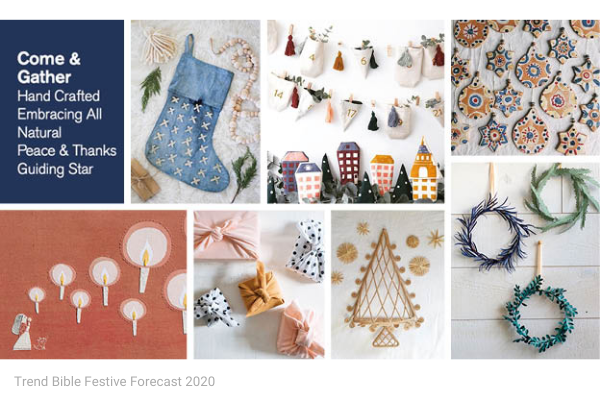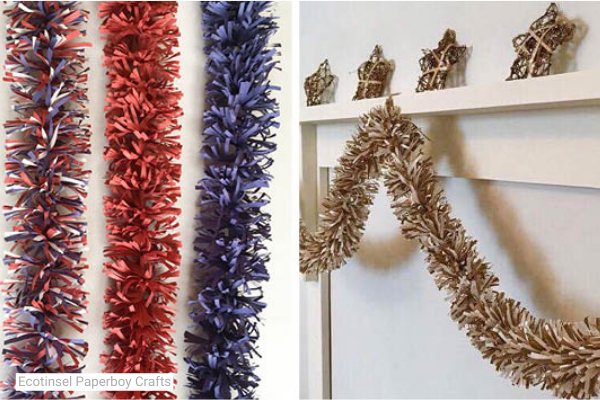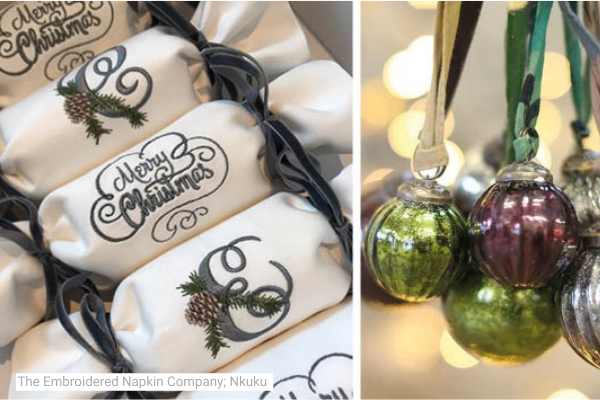)
By Kate Usher, Senior Trend Consultant, Trend Bible
Traditionally the Christmas season is a time of exuberance and excess, generating up to 30% more household waste than other times of the year. The tendency for festive products to come dripping in glitter (a serious micro-plastic pollutant) is wreaking havoc with our water streams and oceans. Responsible retailers are beginning to address consumer concerns and clean up their act, but what does going ‘glitter free’ mean for the future of decoration and celebration? Is there a sustainable middle ground?
Problematic Plastic
With estimates that up to 12 million tonnes of plastic waste may be making its way to our ocean floor each year, there is more concern than ever about reducing consumption of single use plastic and also limiting the amount of micro-plastics entering our water streams. During the festive season, a staggering extra 30% of waste is generated, which makes this one of the most wasteful times of the year and a prime time for consumer-guilt.
Glitter is a major ecological hazard, and in recent years we’ve seen a wave of innovation in biomaterials which claim to offer sustainable alternatives to the problematic micro-plastic. However, a recent study carried out by Angela Ruskin University in Cambridge suggests that so called ‘eco glitters’ are just as damaging to our rivers and lakes as the ordinary products on the market. This study suggests that some of these ‘biodegradable’ glitters can do more harm than good when they reach our water streams, with cellulose based glitters even encouraging the growth of invasive species and disrupting the food chain.
Major Moves Towards Sustainability in the UK
This autumn UK retailers, Morrisons, John Lewis and Waitrose have all made a decision to remove any glitter products from their Christmas ranges, including categories like their cards, crackers, wrapping paper and gift bags. For Morrisons, this move is set to eliminate more than 50 tonnes of plastic from its shelves over Christmas alone.
Boots have found their customers’ online searches for ‘eco-friendly products’ have grown by almost a third in the last year, and in response to this, they have committed to ditching any single use plastic packaging for 2020. In contrast, we are yet to see any US retailers take such decisive action.
So how will decorations and festive packaging evolve without the use of glitter and excess plastic?

In the wake of the pandemic, consumers have had time to reassess what’s important to them and we will see values shift away from materialism and excess, in favour of more thoughtful and considered gifting, packaging and decoration. As reported in our 2020 Festive Forecast, directional designers are striding away from glitter and shine in favour of a more humble, handmade and wholesome aesthetic. Sparkle and shine is substituted with other luxury embellishments such as fabric manipulation, eco printing and hand embroidery. UK family business Paperboy Crafts have invented Eco Tinsel, an entirely recyclable product which comes in a range of vibrant colours.

In contrast to this trend and far from the rustic and hessian sack-type aesthetic previously associated with eco-alternatives, future focused brands are leading sustainable decoration into a more elegant and luxury space. Think hand blown glass baubles, fresh winter foliage and intricately embroidered decorations. The Embroidered Napkin Company produce bespoke monogrammed crackers which can be reused year after year, while British lifestyle brand Nkuku sell hand blown baubles which are ethically made from recycled glass in India.

Looking further ahead, we will begin to see brands experiment with surface materials in response to consumer concern for the environment. As forecast in our SS 2022 Home & Interiors Trend Golden Hour, designers are experimenting with organic and sustainable alternatives that offer a more subtle shimmer, from bioluminescence to sustainably sourced mother of pearl.

As consumer mindsets around sustainability continue to evolve in coming seasons we can expect householders to rethink the very nature of throwaway gifting and decoration. What might be in store for throwaway items like Christmas crackers, or even the traditional plastic tree?
Find out more about the latest Christmas trends with Kate at Festive Focus Day on 21st January 2021. Register here.
If you enjoyed this article, you might also like:





)
)
)
)
)
.jpg.png/fit-in/500x500/filters:no_upscale())
)
)
)
)
)
)
)
)
)
)
)
)
)
)
)
)
)
)
)
)
)
)
)
)
)
)
)
)
)
)
)
)
)
)
)
)